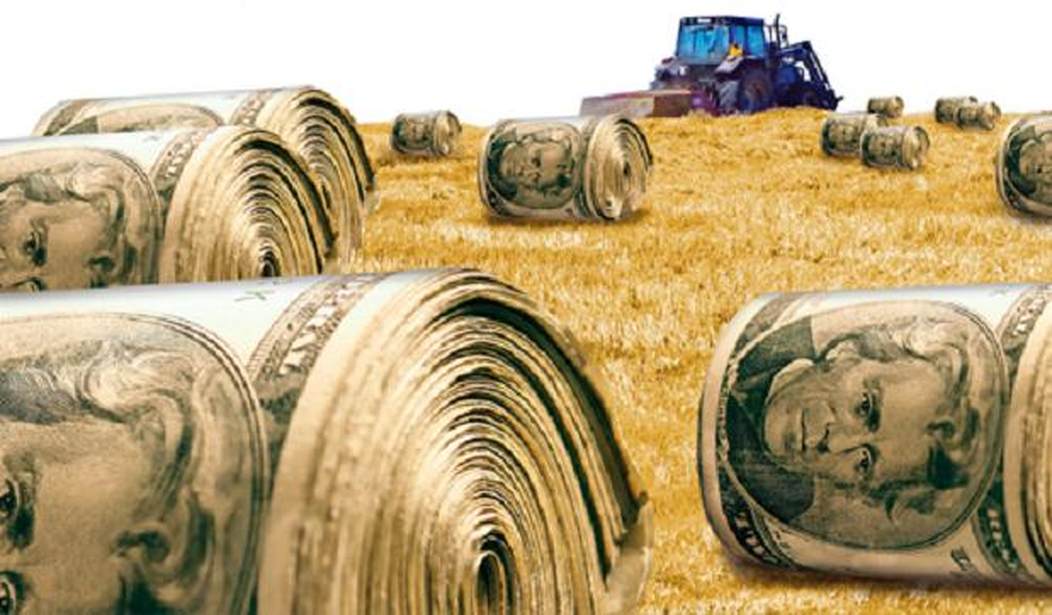Earlier this year, we were entreated to a vivid example of how neither party is committed to shrinking the federal government and bolstering private enterprise when they passed a five-year Farm/Food Stamp bill. CBO pegged the 10-year cost of the bill at $965 billion, up from $604 billion in 2008. Yet, the politicians sold it as an $8 billion cut because it fell short of the notional $973 billion baseline.
Aside for the raw cost of the bill, the structural changes on the agriculture side and the lack of reforms on the food stamp side actually made the bill even worse: At the time, we noted the following:
Moreover, any projected score on food stamp spending is meaningless. The food stamp program is part of mandatory spending, and given the fact that this bill fails to structurally reform the program on a large scale, the 10-year cost will continue to rise as more people are encouraged to join.
On the agriculture side, this bill is an even bigger joke. Drafters of the bill are boasting how they are abolishing $5 billion in direct subsidies. The problem is that this bill creates new subsidy programs, which will be even more expensive and market-distorting – and they will be permanent law, not subject to reauthorization.
The Agricultural Risk Coverage (ARC) would guarantee shallow loss off of record revenue farmers have been enjoying over the past few years. The shallow loss program would kick in when revenue dips below 86% of recent year amounts The Price Loss Coverage (PLC) would trigger subsidies when prices for certain commodities dip below target prices. For many crops, prices are already beginning to drop towards the cusp of those trigger levels. Hence, the cost of these programs will probably spike much higher than originally projected when CBO scored the bill with the higher prices.
Less than two months later, both predictions have come true. With regards to food stamp spending, the lack of structural reforms is precluding the actualization of even the notional baseline savings. Here is a report from NPR explaining why the “savings” from food stamp “reforms” never got off the ground:
The cuts were related to a program known as “heat and eat.” In the past, it had allowed the participating states to give low-income households as little as $1 a year in home heating aid so they’d qualify for more food stamps.
States said it made the program and got help to those who needed it. But the maneuver was called a loophole by both Republicans and Democrats. So last month, Congress agreed to raise the amount of utility assistance states would have to pay to trigger the provision — to more than $20 a year.
The idea was that many of the states that use “heat and eat” would decide it wasn’t worth their while. The expected result? Some 850,000 food stamp recipients would have their benefits cut an average $90 a month, which is where the savings would come in.
Turns out, Congress was wrong.
The “heat and eat” program covers 16 states, plus the District of Columbia. Six states — Pennsylvania, New York, Connecticut, Rhode Island, Oregon and Montana — have already declared that they will boost home energy benefits to avoid the food stamp cuts. Two other participants — Vermont and D.C. — are actively working to do the same thing.
With regards to the farm subsidies, Heritage Action has cited a new analysis from the University of Missouri’s Food and Agricultural Policy Research Institute confirming our worst suspicions – the new subsidy programs will cost more than the direct payments and more than CBO originally projected:
Despite the elimination of direct payments, the new farm bill is going to pay off better than the 2008 law for many growers and could be more costly to taxpayers than the Congressional Budget Office estimated, according to an analysis released Thursday that provides the first up-to-date look at the bill’s impact.
According to economists with the University of Missouri’s Food and Agricultural Policy Research Institute, the cost of the farm bill’s new Price Loss Coverage program will start at $2.1 billion for this year’s crops and increase to $3.4 billion by 2018.
CBO had estimated the PLC would cost roughly $1.6 billion to $1.7 billion a year through 2019. The CBO analysis was based off a forecast issued last year when market prices were higher. PLC will trigger payments when prices fall below fixed levels, or reference prices.
Every Republican running as a conservative this year must take notice. This is just one example of how the GOP establishment has no intention of fighting for limited government, and to the extent that they entice rank-and-file members into supporting shiny objects, there is always a catch.
Cross-posted at the Madison Project














Join the conversation as a VIP Member